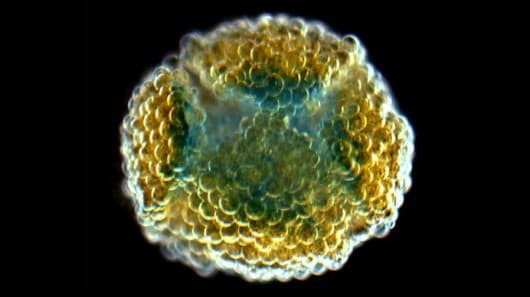Oxford University Scientists Print 3D Synthetic Tissues
"Droplet Networks" are the new synthetic material developed by Researchers at the Oxford University with the purpose of replacing damaged body tissues in future. The 3D printed tissue, even though dissimilar in physical semblance aims to emulate the functions of the human tissue. The droplets are encapsulated in aqueous compartments, each approximately 50 microns in diameter. A network of tens of thousands of connected water droplets give structure to the printed lipid form. The lipid film acts like a nerve by using protein pores as pathways for electric signals. The printed networks are capable of folding themselves similar to muscle movements by transferring water from one cell to another using osmosis.

While synthetic tissues are cheaper and easier to access than living tissue, they are more difficult to design and produce. The printed synthetic allows the patient's own cells to reproduce the issues, unlike living tissues from a donor which might face rejection issues. While a step closer, the end goal of printing replacement tissues and organs still remains far from realization.
Source: <a href="https://www.abc.net.au/science/articles/2013/04/05/3729985.htm" target="_blank" rel="nofollow noopener noreferrer">3D printing creates synthetic 'tissue' › News in Science (ABC Science)</a>

While synthetic tissues are cheaper and easier to access than living tissue, they are more difficult to design and produce. The printed synthetic allows the patient's own cells to reproduce the issues, unlike living tissues from a donor which might face rejection issues. While a step closer, the end goal of printing replacement tissues and organs still remains far from realization.
Source: <a href="https://www.abc.net.au/science/articles/2013/04/05/3729985.htm" target="_blank" rel="nofollow noopener noreferrer">3D printing creates synthetic 'tissue' › News in Science (ABC Science)</a>
0
